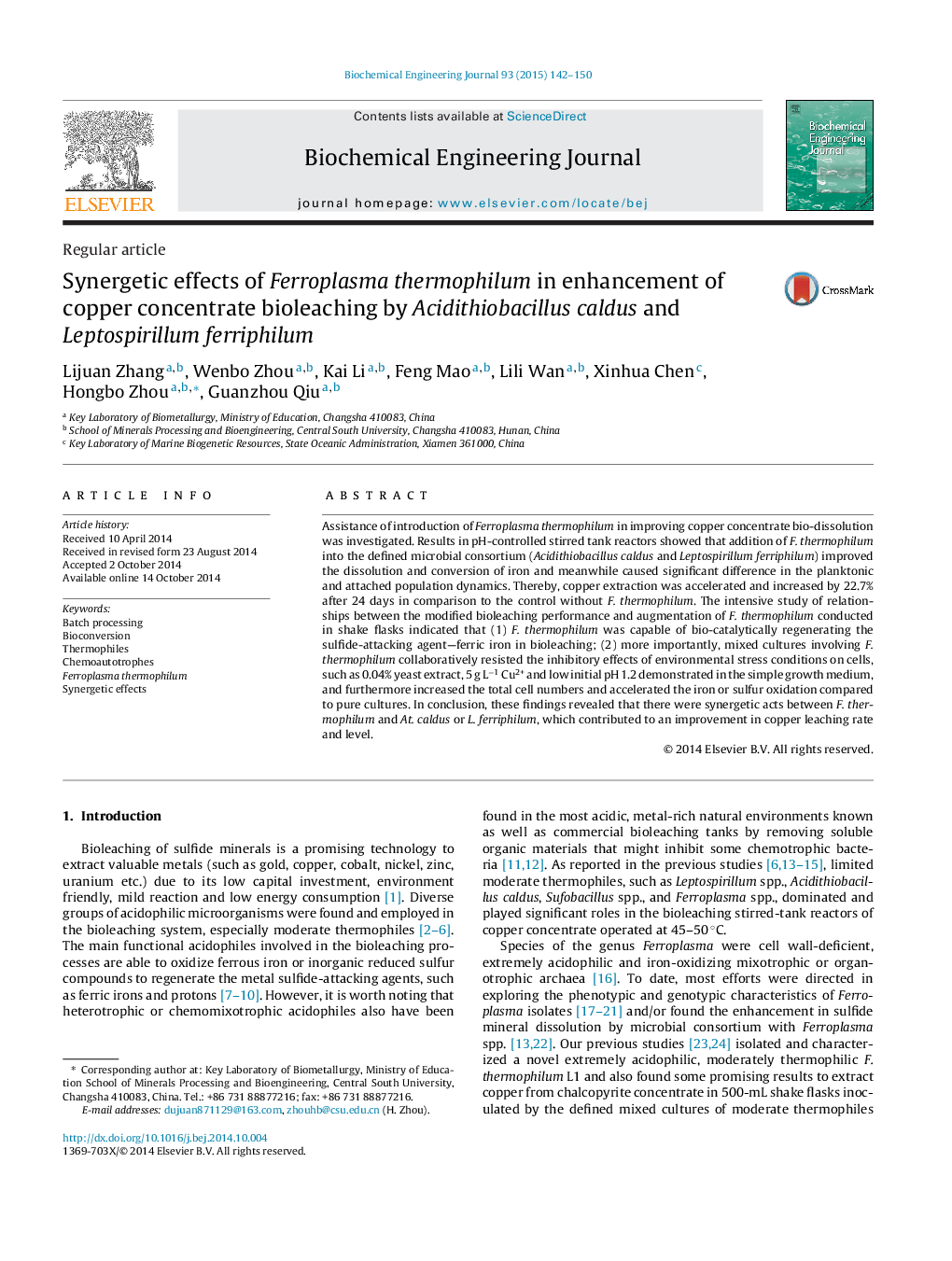| Article ID | Journal | Published Year | Pages | File Type |
|---|---|---|---|---|
| 3066 | Biochemical Engineering Journal | 2015 | 9 Pages |
•A bioleaching consortium including F. thermophilum improved copper extraction.•F. thermophilum introduction complicated free and attached population dynamics.•Cooperation between organisms weakened the inhibitory effects of stress conditions.•Synergetic acts of F. thermophilum increased cell growth and metabolic capacities.
Assistance of introduction of Ferroplasma thermophilum in improving copper concentrate bio-dissolution was investigated. Results in pH-controlled stirred tank reactors showed that addition of F. thermophilum into the defined microbial consortium (Acidithiobacillus caldus and Leptospirillum ferriphilum) improved the dissolution and conversion of iron and meanwhile caused significant difference in the planktonic and attached population dynamics. Thereby, copper extraction was accelerated and increased by 22.7% after 24 days in comparison to the control without F. thermophilum. The intensive study of relationships between the modified bioleaching performance and augmentation of F. thermophilum conducted in shake flasks indicated that (1) F. thermophilum was capable of bio-catalytically regenerating the sulfide-attacking agent—ferric iron in bioleaching; (2) more importantly, mixed cultures involving F. thermophilum collaboratively resisted the inhibitory effects of environmental stress conditions on cells, such as 0.04% yeast extract, 5 g L−1 Cu2+ and low initial pH 1.2 demonstrated in the simple growth medium, and furthermore increased the total cell numbers and accelerated the iron or sulfur oxidation compared to pure cultures. In conclusion, these findings revealed that there were synergetic acts between F. thermophilum and At. caldus or L. ferriphilum, which contributed to an improvement in copper leaching rate and level.
